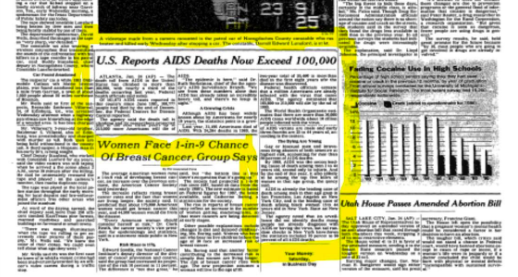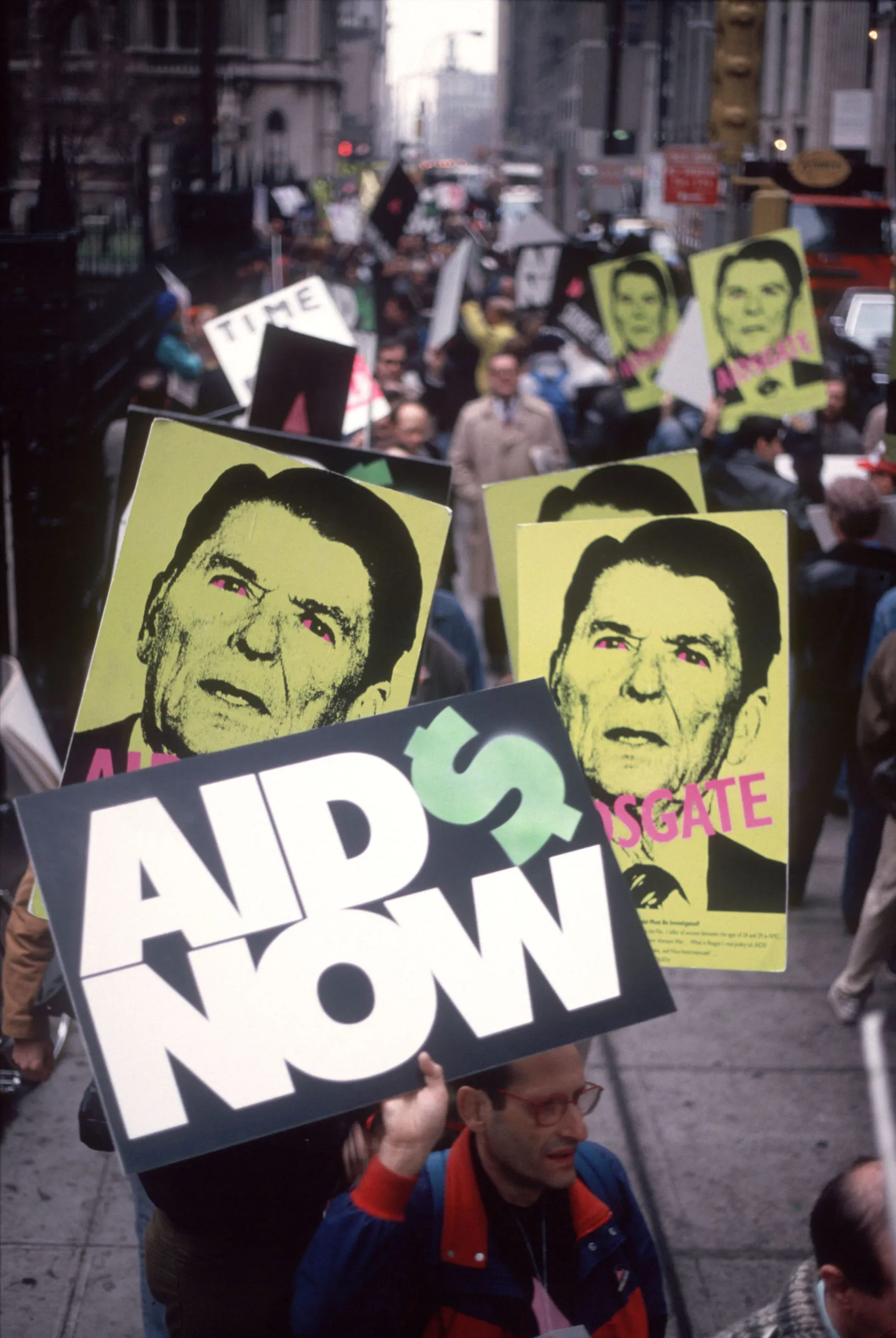There’s an eye-opening difference between the way the New York Times reported 100,000 coronavirus deaths and 100,000 AIDS deaths

The New York Times’ 1991 article reporting on the 100,000 deaths of AIDS patients (twitter/@peterstaley)
The New York Times made an impact with a front page dominated by the “incalculable loss” of 100,000 people who have tragically died of coronavirus in the US.
The grim milestone puts the US far behind every other country in the world in dealing with the pandemic, and the death toll continues to rise day by day.
“They were not simply names on a list. They were us,” the paper read on Monday (May 25). “Numbers alone cannot possibly measure the impact of the coronavirus on America.”
So instead, the entire page was filled top to bottom with death notices of victims from across the country. Names, ages, hobbies, professions, personalities and favourite sports teams were among the personal details included to convey the sheer size of the tragedy.
It was a far cry from how the same paper reported the same number of deaths 29 years ago — the only difference being that this epidemic was HIV, not coronavirus.
The New York Times did not devote a front page to the first 100,000 people who died of AIDS.
On January 25, 1991, the death toll for AIDS in the US reached the same staggering number of 100,000. But because the bulk of those deaths were gay men, their plight didn’t warrant a front page headline.
Nor was it found on the second page, or the the third. The story was shunted back to page 18, hidden below the halfway fold of the paper. No pictures, and no names.
It apparently deserved less prominence than an article about the US Postal Service’s newest stamp.
“US reports AIDS deaths now exceeds 100,000,” the tiny headline read. Below it was a story written by the Associated Press — the New York Times hadn’t bothered to write their own — its cold language characteristic of the way “the gay plague” was viewed at the time.
“The death toll from AIDS in the United States has climbed to more than 100,000, with nearly a third of the deaths occurring last year, federal health officials said today,” the article began.
“The [Federal Centre for Disease Control] said the death toll is climbing and its researchers projected that in the next three years up to 215,000 more Americans will die of AIDS.”

AIDS activists blaming Ronald Reagan for lack of funding into HIV research, New York, March 24, 1988. (Allan Tannenbaum/Getty)
AIDS was second only to injuries as the leading cause of death among young men.
In contrast to the “incalculable loss” caused by coronavirus, the deaths of 100,000 AIDS patients were framed as mere “statistics” which “point to a growing crisis” — as if a crisis wasn’t already underway.
At the time, AIDS was the second leading cause of death among men 25 to 44 years old, second only to injuries. But the stigma surrounding the disease was so great that it took years before president Reagan even uttered the word “AIDS” in public.
He was accused of treating the crisis as “a great joke”, and many believe his apathy caused thousands to get infected and die, in part because it delayed research critical to understanding and treating the virus.
The number of AIDS deaths in the US would eventually exceed 700,000, each one just as much as tragedy as those lost to coronavirus, even if the world refused to acknowledge the scale of the tragedy at the time.
As the New York Times says of the coronavirus victims, “none of them were numbers”. They were friends, lovers, children, siblings, parents, every bit as human as the COVID-19 dead. And they deserved just as much respect.

